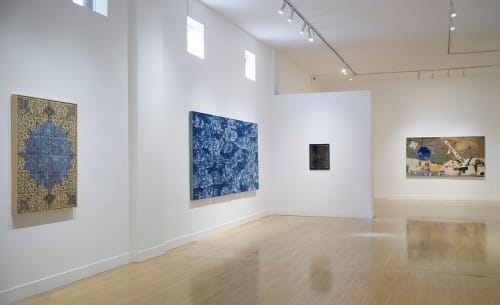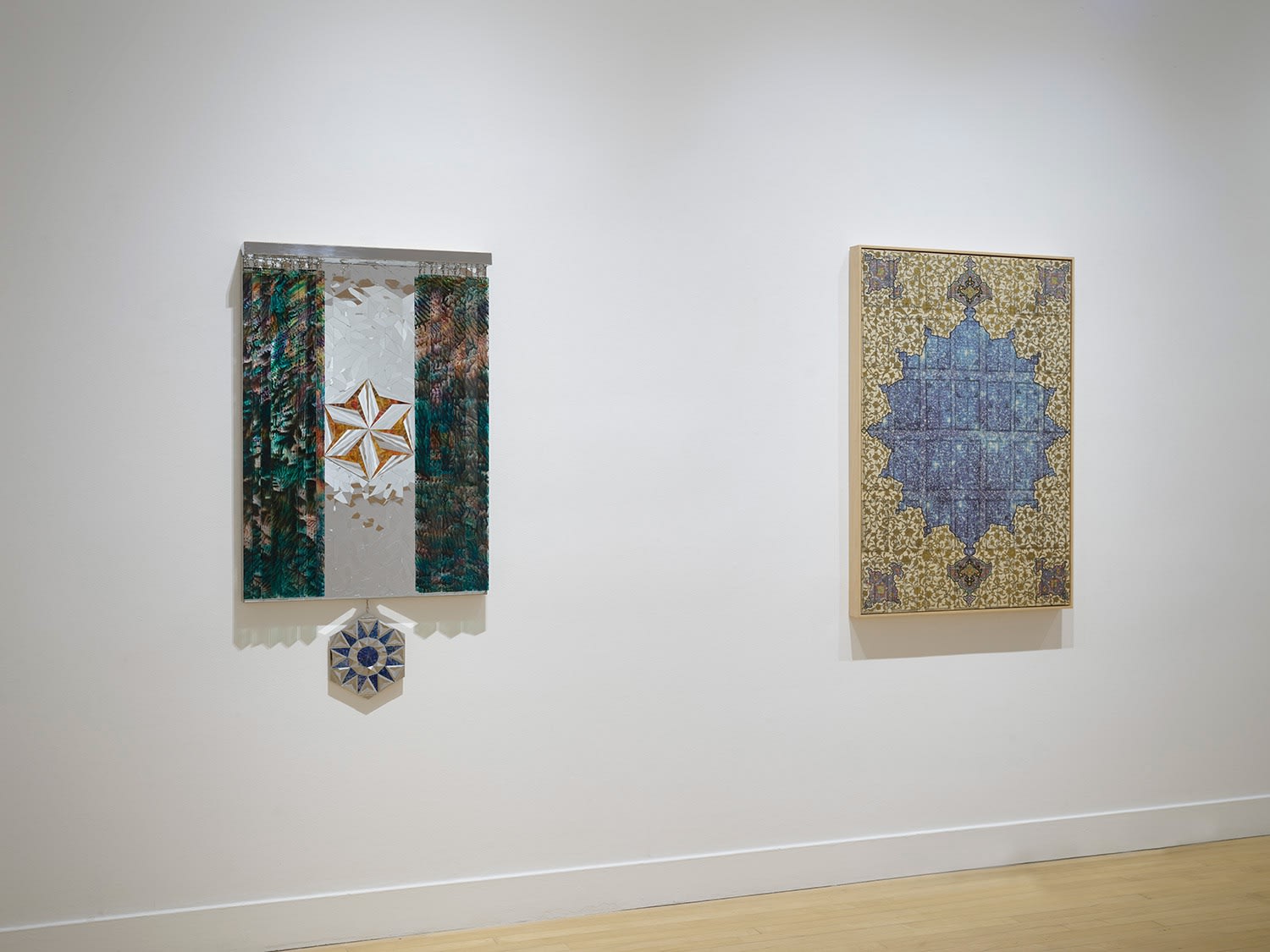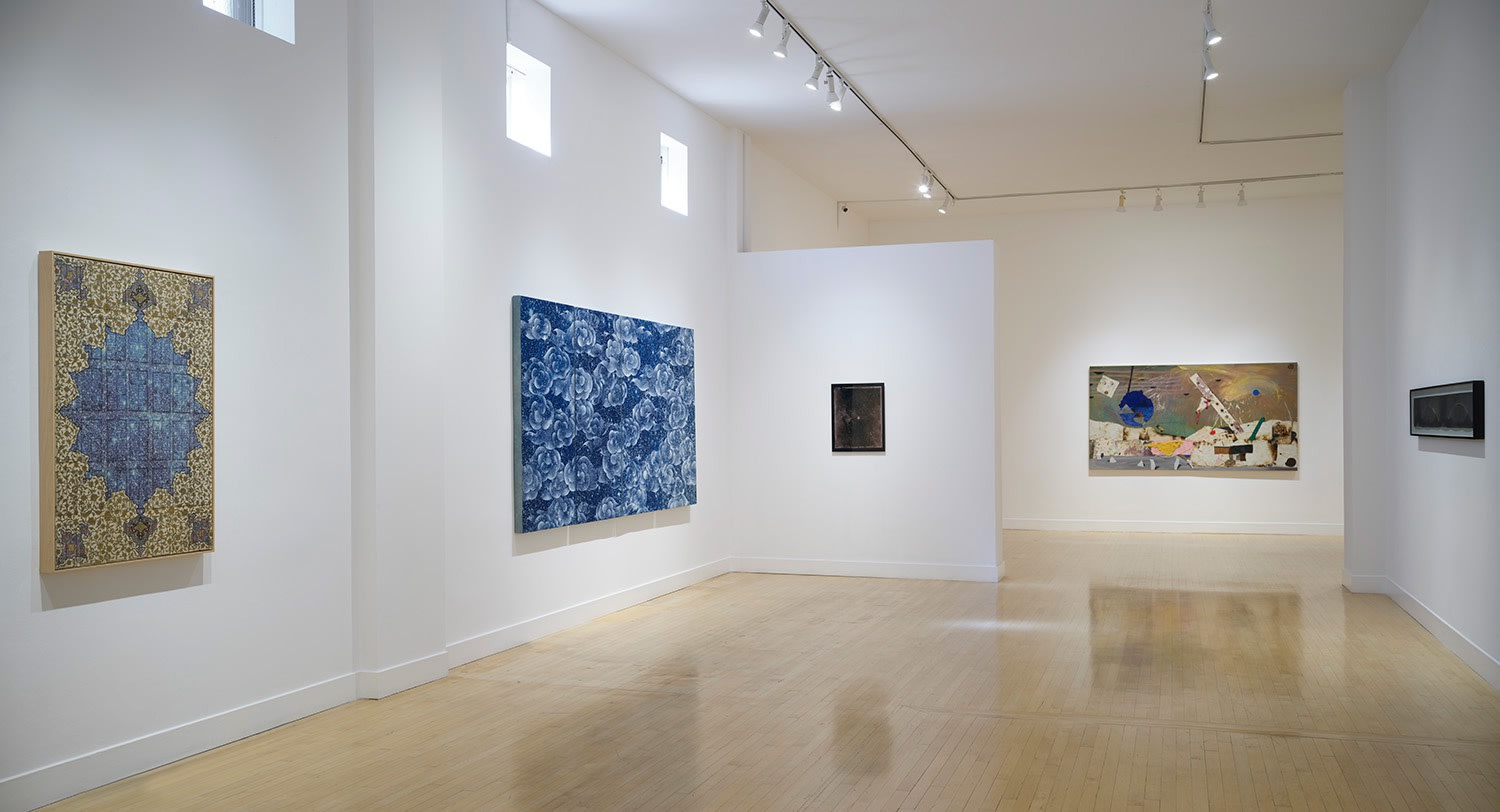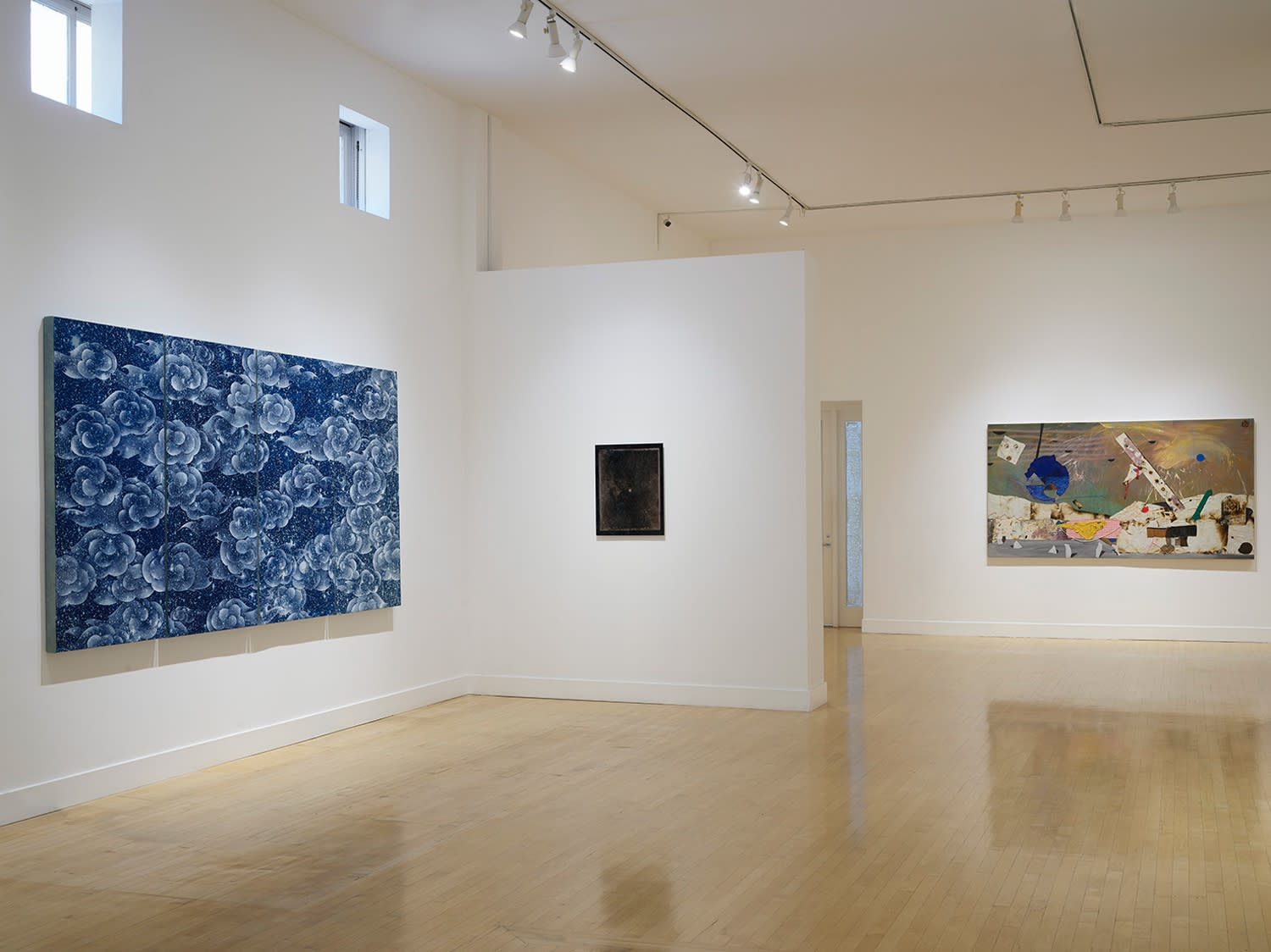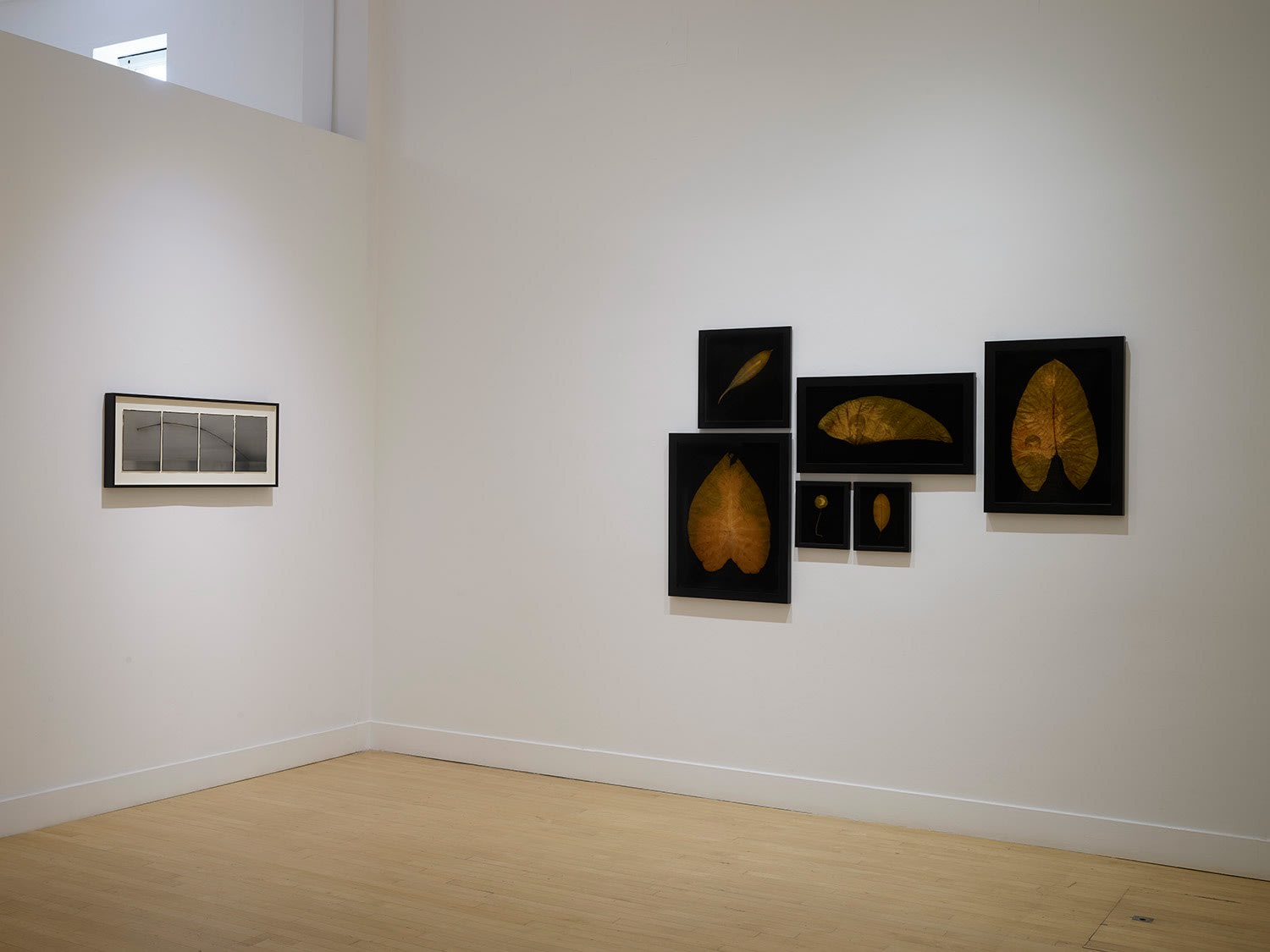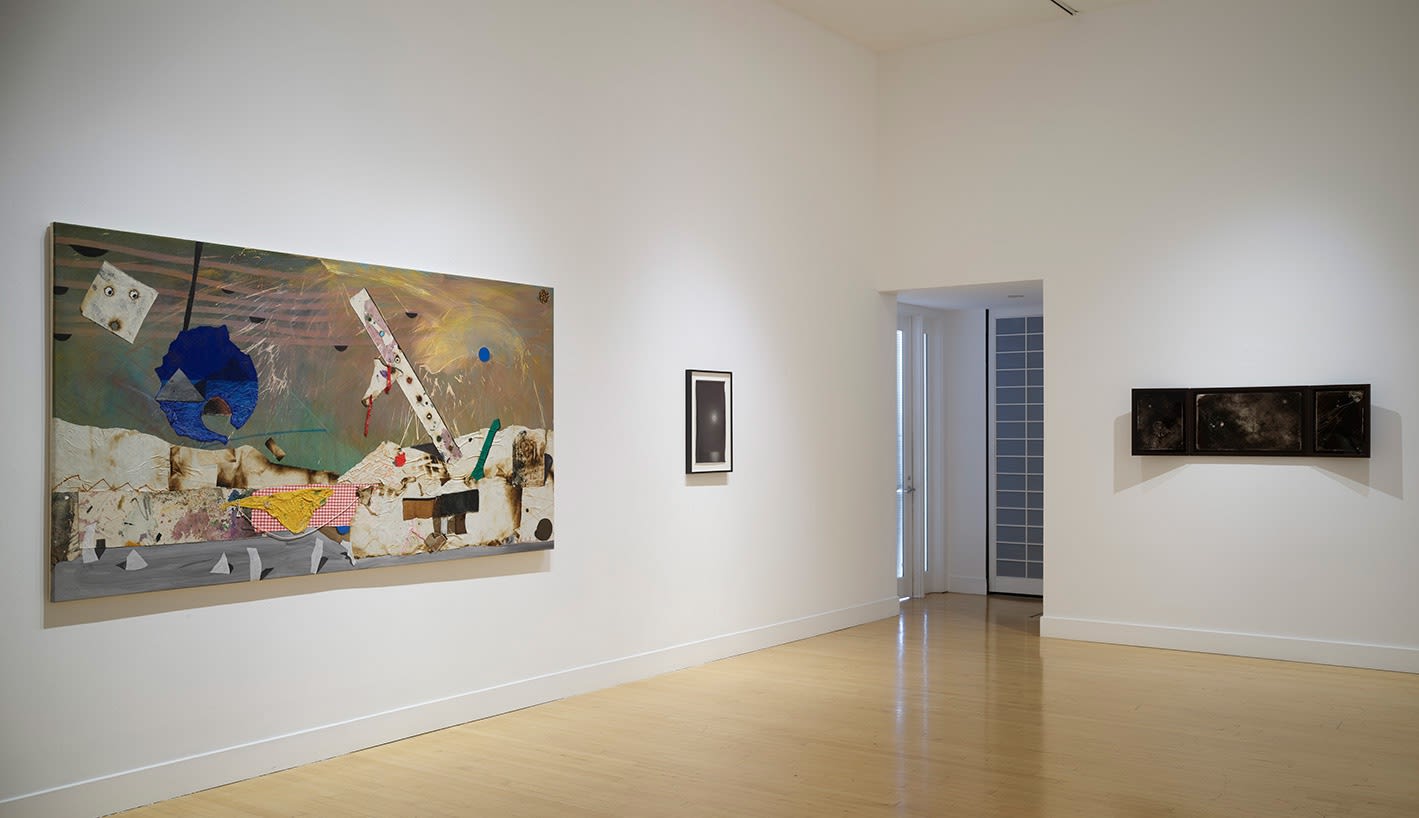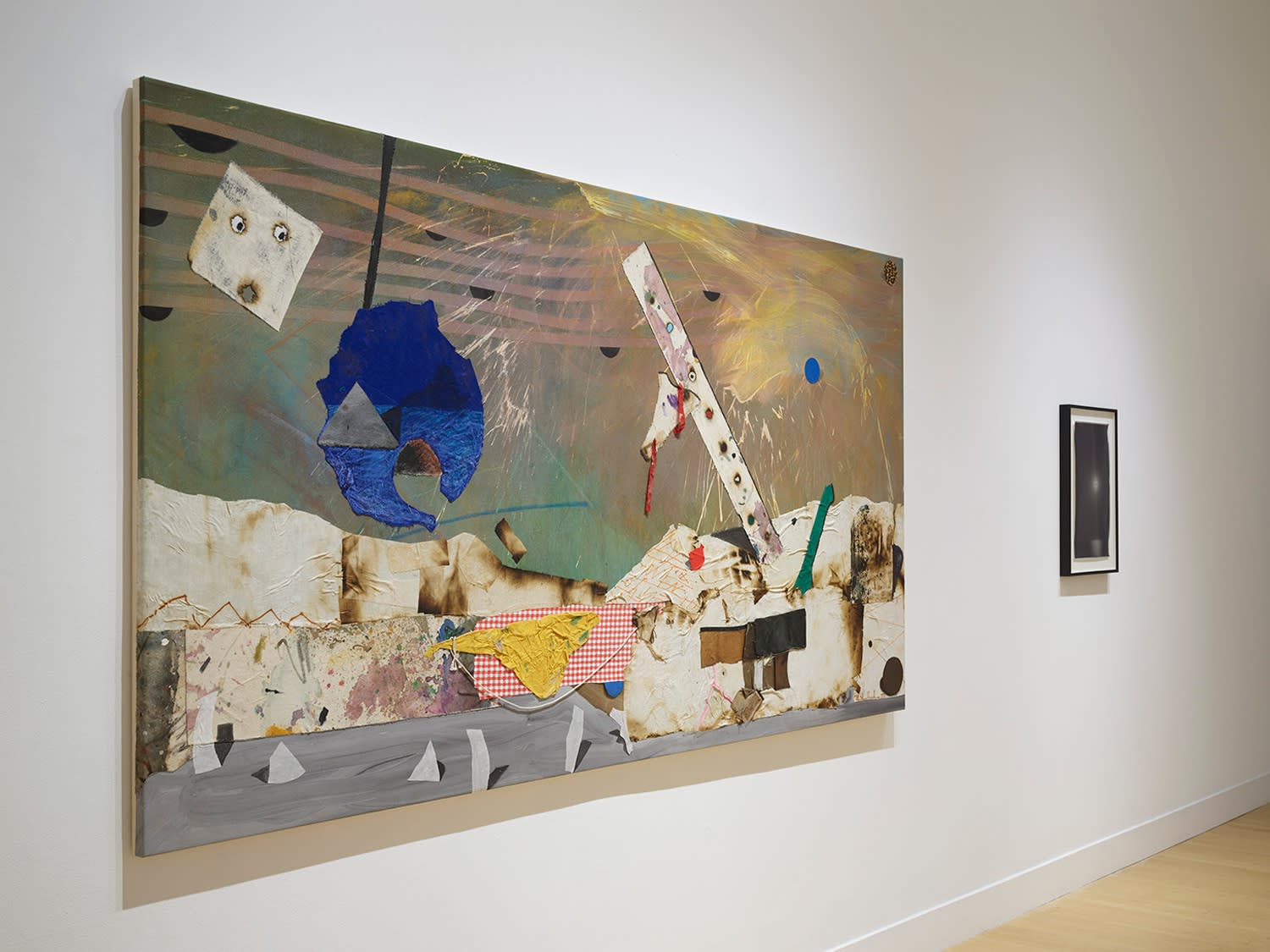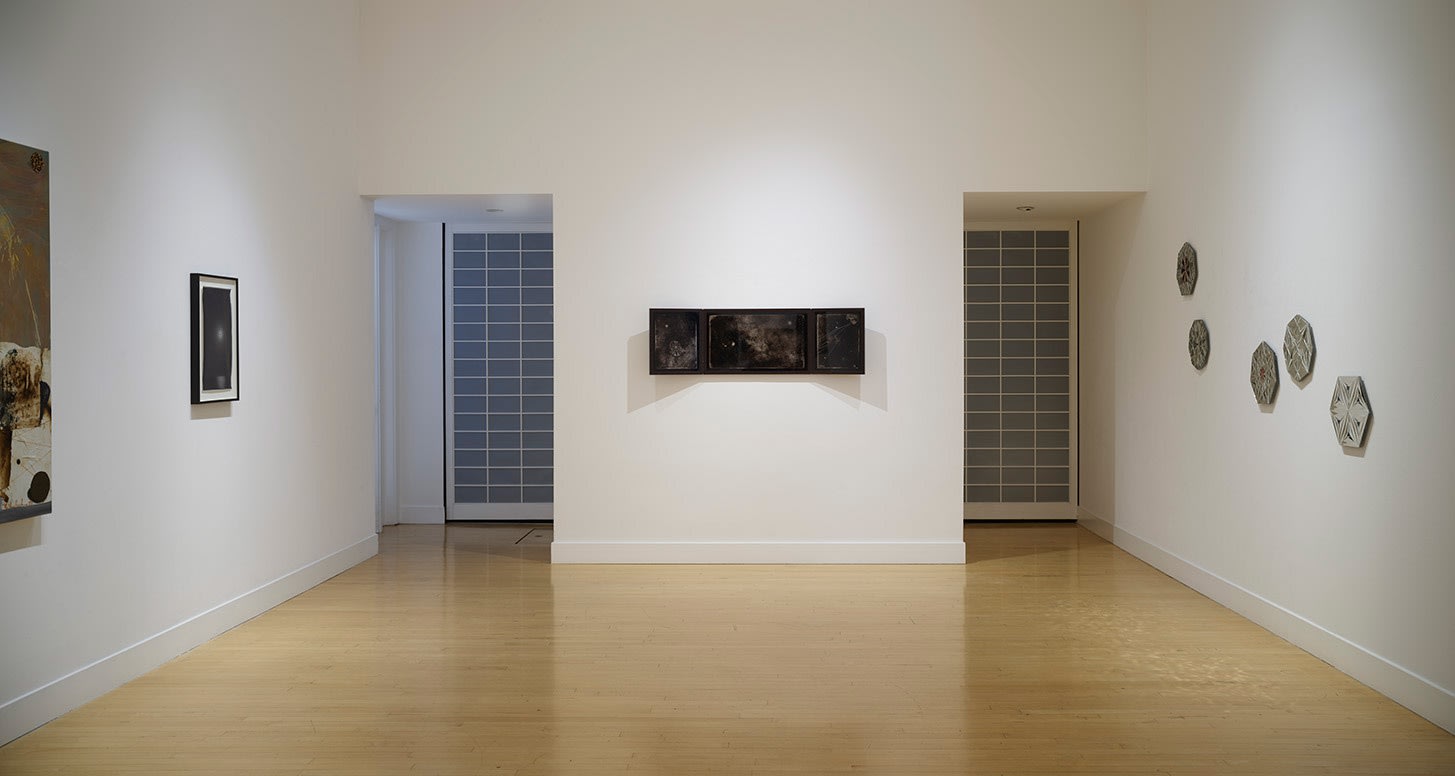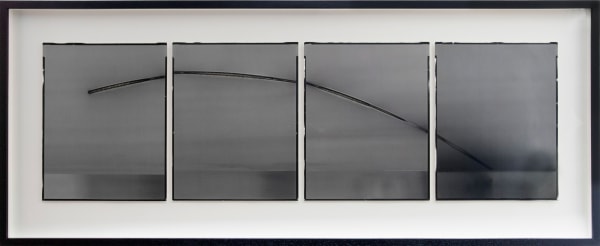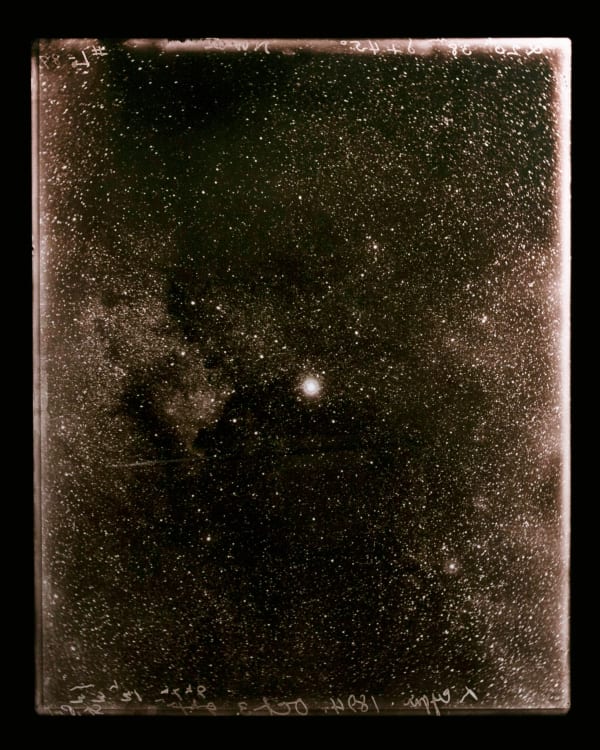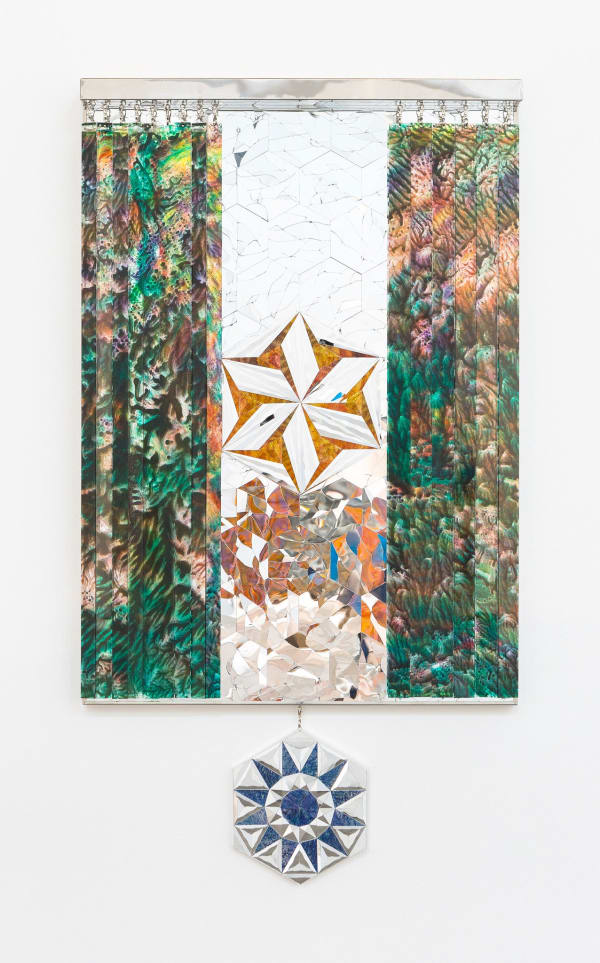Blaze Across the Firmament
Haines Gallery proudly presents Blaze Across the Firmament, a group exhibition exploring our relationship to the heavens — those ethereal bodies that illuminate the night sky, mark our place in the universe, and offer us guidance and hope. The skies and cosmos serve as a visual and conceptual reference point in paintings, photographs, and sculptures by Ala Ebtekar, Binh Danh, Chris McCaw, Linda Connor, Mike Henderson, and Monir Shahroudy Farmanfarmaian, inspiring meditations on the origins and cycle of life and inviting visitors to gaze both inward and out.
Ala Ebtekar’s (b. 1978) research-based practice moves between painting and photography, art and science, exploring the juncture between history, myth, and culture. Blaze Across the Firmament includes works from various series that combine cyanotype images of the starry night sky, captured from overnight exposures, with references to literature, philosophy and theology, and the traditional arts of Iran. The mixed media work Coelestis (after Hafiz), 2012, incorporates pages from a collection of poems by the Persian poet Hafiz, who famously wrote, “Let us be like / two falling stars in the day sky. / Let no one know of our sublime beauty. . . that surpasses / Every description of ecstasy / and love.” Ebtekar overlays these pages with decorative motifs drawn from Islamic art and architecture, creating an elaborate window that opens to an inky blue evocation of the cosmos.
Binh Danh (b. 1977) utilizes early photographic processes to examine connections between history, identity, and place, often within the context of his own experiences as a Vietnamese-American. Chlorophyll prints from Danh’s 2005 series Ancestral Altar of the Cosmos combine celestial imagery with portraits of those executed at Cambodia’s notorious Tuol Sleng prison. Danh has conjured these striking images directly onto foliage using the plants’ natural photosynthesizing abilities; these delicate and fragile specimens were then cast into blocks of resin. The resulting objects serve as memorials to victims of the Cambodian genocide, reclaiming their identites, and suggest notions of the afterlife and the interconnectedness of all living things.
Chris McCaw’s (b. 1971) experimental photography harnesses the visceral contribution of natural forces — light, weather, and seasons — to create highly polished images inscribed with the marks of their own making. The sun is both subject and collaborator in his iconic Sunburn series. The powerful lenses within his hand-built cameras function like magnifying glasses, allowing the sun to literally sear its path across light-sensitive paper negatives over long exposures lasting anywhere from 15 minutes to 24 hours, at locations ranging from Alaska, along the Pacific coastline, and the Mojave Desert. McCaw’s work disrupts the idea that a photograph is simply a representation of reality, instead becoming a physical record of the Earth’s movement and the passage of time. Here, the horizon line becomes the site on which our own celestial movements are mapped, connecting the viewer to the larger cycles of astronomical time and planetary motion.
Throughout her distinguished career, photographer Linda Connor (b. 1944) has traveled the world, exploring the relationships between the natural world and our belief systems. Connor’s celestial images of starfields and constellations, comets, and eclipses were made from antique glass plate negatives housed in San Jose’s Lick Observatory, many of which had not been printed from since their creation in the late 19th and early 20th centuries. Recalling an altarpiece in form, the recent triptych Sea of Stars (2020) comprises three of Connor’s Lick Observatory images, rendered here as luminous sublimation prints on aluminum. The artist digitally layers an image of an ammonite — an extinct, fossilized marine mollusk — onto one panel, and a wind-blowing Zephyr on another, transforming the work into a rumination on our place in — and impact on — the world and in the universe. “It’s about where we are in the largest context,” Connor explains, “and a warning of the fragility of our earth.”
A pioneering painter, musician, and filmmaker, Mike Henderson (b. 1944) has been an integral part of the Bay Area art scene for over fifty years. Cloud Nine, a large-scale, mixed media collage on canvas created in 1977, is a pivotal work created at a time when Henderson was searching for new modes of expression following the tumult and violence of the 1960s. Henderson calls his works from this period “space modules.” In these surreal dreamscapes, hovering shapes appear to have landed upon an alien world; Henderson’s experiments with abstract forms and space are expressed as literal forms in (outer) space. Comprising acrylic paint applied with an airbrush or splattered across the surface, charred canvas which the artist burnt in the oven, and colorful pieces of fabric found at Goodwill, Cloud Nine carries a host of associations, from the space race and the 1969 lunar landing, to prehistoric cave paintings of early civilizations, and is a testament to Henderson’s ceaseless invention.
Monir Shahroudy Farmanfarmaian (1923 - 2019) spent over half a century creating stunning mirrored mosaics, sculptures, and works on paper that recall both the sacred geometry of Persian art and the reductive abstraction of the 20th century. Light—reflected from the dazzling surfaces of her work—is central to her practice. Recalling her initial visit to the elaborate mirrored interiors of Iran’s famed Shāh Chérāgh (King of Light) shrine, a site of artistic inspiration, Farmanfarmaian wrote: “I imagined myself standing inside a many-faceted diamond and looking out at the movement and fluid light, all solids fractured and dissolved in brilliance, in space, in sun.” This profound experience — at once earthly and celestial — was one that the artist sought to share through her work. In this exhibition, a group of small mirrored mosaics, their pieces configured into complex stellar forms, are arranged into a constellation that echoes the artist’s lapidary vision of the heavens.

